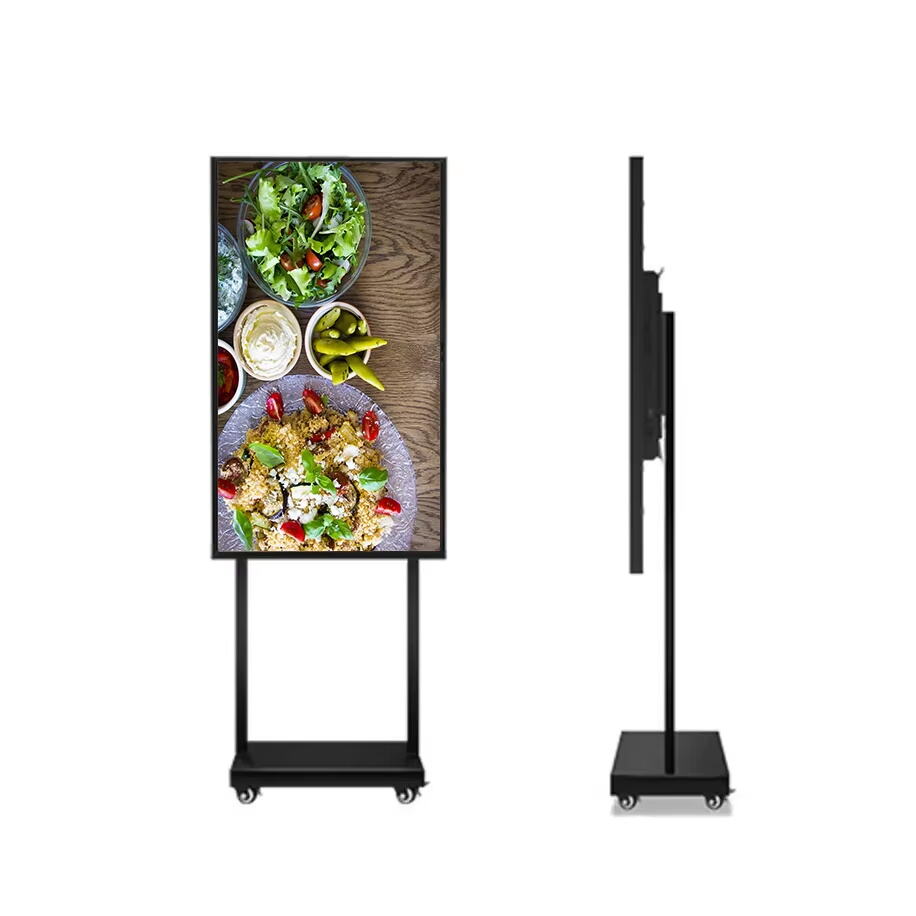Foundations of secure digital signage networks
Digital Signage has become a mission-critical component for many venues, and securing those networks requires a clear foundation. Start by recognizing that a Digital Signage deployment is a distributed system: media players, content management servers, network switches, Wi-Fi access points, and cloud services all interact to deliver visuals and data. Treat the solution as an IT service with formal ownership, documented architecture, and a security lifecycle. Risk assessment should map each Digital Signage element, identify sensitive touchpoints (payment terminals, guest Wi-Fi bridges, camera integrations), and prioritize controls based on impact and likelihood. Early decisions about segmentation, device hardening, and content provenance shape how resilient the system will be against attacks. Design for least privilege, assume components will be exposed to public networks at times, and bake monitoring into the architecture so anomalous behavior on Digital Signage endpoints is visible from day one.
Network architecture and segmentation
VLAN and microsegmentation strategies for signage
Segmenting Digital Signage traffic from corporate and guest networks limits lateral movement if a display or media player is compromised. Use dedicated VLANs and ACLs for signage devices, and implement firewall rules that allow only necessary ports and protocols to the content management servers. For larger deployments, consider microsegmentation at the switch level to ensure that each cluster of players communicates only with its authorized management hosts. This approach reduces blast radius and makes incident containment far easier.
Secure network endpoints and hardened access points
Network hardware that supports Digital Signage should be hardened: change default credentials, disable unused services, and apply the vendor’s security best practices. Wireless access points used for remote signage must support strong encryption and enterprise authentication (WPA3-Enterprise or equivalent). Where possible, avoid placing signage players on public Wi-Fi or network segments with BYOD devices. Use 802.1X for port-based network access control to authenticate devices before granting Digital Signage network access.
Device security and endpoint management
Firmware updates, secure boot, and patch cadences
Keep Digital Signage media players and displays updated with vendor-supplied firmware and security patches. Implement an automated patch management schedule that tests updates in a lab before wide rollout. Where supported, enable secure boot and trusted platform modules (TPM) so attackers cannot load unsigned firmware or tamper with device boot chains. Maintaining an up-to-date device estate reduces exposure to known vulnerabilities exploited in the wild.
Endpoint controls and configuration baselines
Establish hardened configuration baselines for all signage endpoints: disable unused ports (USB, serial), lock down administrative interfaces, and remove unnecessary services. Use device management agents or an MDM/EMM solution to enforce policies, rotate credentials, and push telemetry to a central console. Inventory management—knowing which devices are on the network and their configuration state—is foundational to preventing rogue or out-of-date players from becoming entry points.

Content management and access control
Authentication, authorization, and role-based control
The content management system (CMS) is the crown jewel of a Digital Signage deployment. Only grant CMS access on a need-to-know basis and implement multi-factor authentication for administrators. Role-based access control (RBAC) ensures content editors, operators, and network admins have distinct privileges. Log all CMS actions—uploads, playlists, and scheduling changes—and retain logs for forensic analysis.
Content validation, signing, and provenance checks
Attackers often attempt to inject malicious media or misleading content. Protect content integrity by implementing signing and validation. Digitally sign approved media assets and use players that verify signatures before playback. Maintain strict version control and enforce checksums on content delivered to remote devices. Content provenance policies prevent unauthorized or malicious assets from appearing on screens.
Network operations and monitoring
Centralized logging, SIEM, and alerting
Feed Digital Signage logs—player health, CMS access, network flows—into a centralized logging and security information and event management (SIEM) platform. Configure alerts for unusual events such as repeated failed logins, unexpected content changes, or outbound traffic to suspicious domains. Centralized monitoring gives operations teams visibility and speeds incident detection across the entire Digital Signage estate.
Anomaly detection and incident response playbooks
Define normal operational baselines (typical CPU usage, playlist update cadence, and bandwidth patterns) and implement anomaly detection to catch deviations in real time. Build incident response playbooks tailored to Digital Signage scenarios: tampered content, ransomware on media players, or physical theft. The playbooks should identify containment steps, evidence collection procedures, communication templates, and recovery sequences to restore trusted content quickly.
Physical security and supply chain considerations
Tamper-proof enclosures and secure installation practices
Physical access to displays and players is a frequent attack vector. Use tamper-resistant enclosures, lockable access panels, and secure mounting hardware to reduce the risk of on-site tampering. Locate players in locked cabinets or service areas where possible, and ensure that all field technicians follow signed access logs and background-checked vendor policies.
Vendor vetting and secure procurement
Digital Signage deployments rely on hardware and third-party software. Vet vendors for secure development practices, patch policies, and supply chain integrity. Include security requirements in procurement contracts—such as timely vulnerability disclosures, signing of firmware, and support for remote patching. Maintaining trusted supplier relationships reduces the risk of compromised devices entering your environment.
Policy, training, and compliance
Governance, change control, and configuration management
Create clear governance documents for Digital Signage: who owns the CMS, how content is approved, and which change control steps are mandatory. Enforce configuration management so device settings are standardized and deviations flagged. Regular audits of user roles and privileges keep the environment aligned with least privilege principles.
Staff awareness, access hygiene, and incident drills
Train content editors and on-site staff to recognize social-engineering attacks, phishing attempts, and suspicious physical access. Require strong password hygiene and provide periodic tabletop exercises that simulate a Digital Signage incident. Human awareness is often the last line of defense; rehearsed teams respond faster and make fewer procedural errors under pressure.
Deployment best practices and resilience
Secure commissioning and zero-trust deployment models
During rollout, commission devices using secure provisioning—unique device certificates, per-site keys, and encrypted content transfer. Consider zero-trust principles: authenticate every component and prohibit implicit trust based on network location. This reduces the chances of unauthorized devices being accepted into the signage ecosystem.
Backup strategies, offline modes, and rapid recovery
Design redundancy into content delivery: keep local caches, scheduled snapshots, and offline playlists that players can use if the CMS becomes unavailable. Maintain secure backups of configuration and content repositories. Test recovery drills regularly so signage can be restored quickly after a compromise or outage.
Privacy, data protection, and integration risks
Minimizing personal data exposure on screens
Digital Signage often integrates with user-facing services (loyalty programs, wayfinding, or interactive kiosks). Limit the display of personal data and ensure any PII handled by the signage system is encrypted in transit and at rest. Implement session timeouts for interactive systems and sanitize logs that could retain sensitive information.
Secure API usage and third-party integrations
When Digital Signage connects to third-party APIs—weather feeds, advertising networks, reservation systems—use API keys with least privilege and enforce TLS. Monitor those integrations for abnormal use and apply quotas or validation to prevent supply-chain-based content manipulation.
FAQ
How quickly can a compromised Digital Signage device be contained
Containment time depends on monitoring maturity. With centralized logging and anomaly detection, containment can occur within minutes to hours by isolating the affected VLAN, revoking device certificates, and rolling a clean content snapshot. Without monitoring, compromise detection can take days, increasing recovery complexity.
What are the most common attack vectors targeting Digital Signage
Common vectors include exposed CMS admin interfaces, outdated player firmware, unsecured USB ports used to load media, weak default credentials, and social-engineering to gain physical access. Mitigations focus on access control, patching, and physical security.
How does content signing improve signage security
Content signing ensures that only authorized media plays on displays. Media assets are cryptographically signed by a trusted authority and players verify signatures before playback. This prevents unauthorized content injection and helps maintain brand trust.
What level of investment is typical for adequate signage security
Investment scales with deployment size and risk. Small deployments need robust baseline controls (segmentation, strong credentials, basic monitoring). Larger, multi-site networks require SIEM integration, device management platforms, secure supply-chain contracts, and dedicated operations—typically representing a moderate ongoing OPEX relative to the revenue Digital Signage generates.
Table of Contents
- Foundations of secure digital signage networks
- Network architecture and segmentation
- Device security and endpoint management
- Content management and access control
- Network operations and monitoring
- Physical security and supply chain considerations
- Policy, training, and compliance
- Deployment best practices and resilience
- Privacy, data protection, and integration risks
- FAQ

